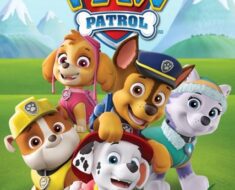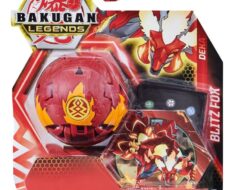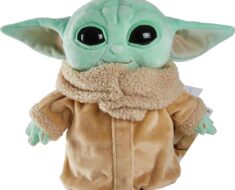Playskool is one of the most recognizable brands of children’s toys and games in the world. From wooden blocks and peg boards to Mr. Potato Head and Play-Doh, Playskool has been providing educational and entertaining products for generations of kids and families.

But how did this company start and evolve over the years? What are some of the most iconic moments in its history and entertainment? And what are its current and future plans in the toy industry? This article will explore the story of Playskool, from its humble beginnings as a division of a lumber company to its present status as a global leader in children’s media and merchandise.
The Early Years: Learning While Playing
Playskool was founded by a former Milwaukee schoolteacher, Lucille King, in 1928. King had developed plans for wooden toys that could be used as teaching aids for children in the classroom. She pitched her idea to the John Schroeder Lumber Company, where she was working at the time, and launched the Playskool Institute as a division of the lumber company.
King’s line of toys consisted of basic, durable wooden items that aimed to develop coordination and stimulate the minds of children. By 1930, Playskool produced more than 40 different toys, including a pounding bench, wooden beads and blocks, a table-mounted sandbox, a pegboard, and others. Playskool Institute’s slogan was “Learning While Playing”, and some items were billed as “Home Kindergarten”. Another slogan the company used was “Playthings with a Purpose”. As early as 1930, Playskool’s toys were endorsed by child guidance experts, and the aura of educational enrichment clung to the brand.
In 1935, the lumber company sold the division to a Chicago manufacturer, Thorncraft Inc. Thorncraft next sold Playskool to Chicago’s Joseph Lumber Company in 1938. Harry Joseph, the lumber company’s head, then hired Manuel Fink, a buyer for a leading Chicago department store, to head the Playskool unit.
Fink brought in Robert J. Meythaler to assist him. Meythaler was trained as an accountant and also was an amateur woodworker. He quickly sensed the possibilities in the Playskool line, and within a few years of being hired by Joseph Lumber, he and Manuel Fink bought the Playskool division themselves. They named the new company Playskool Manufacturing Company.

Meythaler built on the educational cachet with which the brand already was invested by advertising in magazines for sophisticated consumers such as Parents, Redbook, and Psychology Today. He also expanded the product line to include more colorful and varied toys, such as puzzles, games, dolls, and vehicles. He also introduced the Playskool logo, which featured a smiling sun and the word “Playskool” in a playful font.
The Golden Age: Acquisitions and Innovations
In 1943, Playskool bought the J.L. Wright Company, the manufacturer of Lincoln Logs, a popular toy that consisted of wooden pieces that could be stacked to create log cabins and other structures. This was the first of many acquisitions that Playskool made over the years, adding to its portfolio of well-known toy brands. In 1958, Playskool merged with Holgate Toys, Inc., a wood product manufacturer based in Kane, Pennsylvania. In 1962, they purchased the Halsam Company, a producer of wooden blocks, checkers, dominoes, and construction sets.
In 1960, Playskool’s sales stood at about $12 million, which was considered respectable in the notoriously difficult and unstable toy business. Robert Meythaler continued to direct the company’s marketing efforts toward magazines for educated parents, and the theme “Learning While Playing” was still in use.
In 1968, Playskool became a subsidiary of Milton Bradley, a major toy and game company based in Springfield, Massachusetts. This gave Playskool access to more resources and distribution channels, as well as the opportunity to collaborate with other toy brands under the Milton Bradley umbrella.
One of the most successful partnerships was with Hasbro, another toy giant that had acquired the rights to Mr. Potato Head, a toy that consisted of plastic body parts and accessories that could be attached to a real potato or other vegetable. Playskool redesigned the toy to include a plastic potato body and more facial features, and launched a series of commercials featuring the catchy jingle “I’m Mr. Potato Head, I’m so much fun to play with”. The toy became a huge hit, selling over one million units in its first year.
Another innovation that Playskool introduced in the late 1960s was Play-Doh, a soft and pliable modeling compound that could be molded into various shapes and colors. Play-Doh was originally invented by a soap manufacturer as a wallpaper cleaner, but was repurposed as a toy by a schoolteacher who used it in her classroom. Playskool acquired the rights to Play-Doh in 1965 and marketed it as a creative and educational toy for children. Play-Doh soon became one of the best-selling toys of all time, with over three billion cans sold worldwide.

The Modern Era: Challenges and Changes
In the 1970s and 1980s, Playskool faced increasing competition from other toy companies, such as Fisher-Price, Mattel, and Lego, that also offered educational and developmental toys for children. Playskool responded by diversifying its product line to include more electronic and interactive toys, such as Alphie, a robot that taught basic skills and concepts, and Gloworm, a plush toy that lit up when squeezed.
In 1984, Milton Bradley was acquired by Hasbro, Inc., a global toy and entertainment company that owned brands such as G.I. Joe, Transformers, and My Little Pony. Playskool became a division of Hasbro, and its headquarters were moved from Chicago to Pawtucket, Rhode Island, where Hasbro was based.
In 1985, Playskool released a line of infant products under the Tommee Tippee brand name, including bibs and bottles. Many Hasbro products targeted at preschoolers were rebranded with the Playskool name, such as Play-Doh, Tonka, and Weebles. Playskool also continued to license toys from other media properties, such as Teletubbies, Arthur, and Nickelodeon.
In the 1990s and 2000s, Playskool faced new challenges from the changing consumer preferences and technological advancements. Playskool adapted by launching new products that incorporated digital and interactive features, such as VideoNow, a portable video player for kids, and Kota the Triceratops, a life-sized robotic dinosaur that responded to touch and sound. Playskool also entered the online and mobile markets, creating websites and apps that offered games and activities for children.
The Present and Future: A Global Leader in Children’s Media and Merchandise
Today, Playskool is one of the most trusted and respected brands in the toy industry, with a loyal and global fan base. Playskool’s products are sold in over 100 countries, and its website attracts over 20 million visitors per month. Playskool’s mission is to provide children with fun and engaging toys and games that spark their imagination and curiosity, and to support parents and caregivers with resources and tips that help them nurture their children’s development.
Some of the current and upcoming products and initiatives that Playskool is working on include:
- Playskool Heroes is a collection of action figures and playsets that feature characters from popular franchises such as Marvel, Star Wars, Transformers, Power Rangers, and Jurassic World. These toys are designed to encourage preschoolers to play in heroic and adventurous ways, and to expose them to the world of storytelling and fandom.
- Playskool Friends, a line of plush toys and playsets that feature characters from beloved shows such as Sesame Street, My Little Pony, and Peppa Pig. These toys are designed to foster social and emotional skills for preschoolers, and to encourage them to explore their feelings and relationships with others.
- Playskool Pop-Up Rollin’ Ramp, a new toy that combines a vehicle ramp and a pop-up tent in one. This toy is designed to offer multiple ways of play for toddlers, and to stimulate their motor and sensory development. The toy can be easily folded and stored, and comes with two vehicles that can roll down the ramp or inside the tent.
- Playskool Sit ‘n Spin, a classic toy that has been updated with new features and colors. This toy is designed to provide physical and cognitive stimulation for toddlers, and to help them develop balance and coordination. The toy has a spinning base and a handle that can be pushed and pulled to control the speed and direction of the spin. The toy also plays music and sounds that match the spinning motion.
- Playskool Stories, a new initiative that aims to create original and engaging content for children and families across various media platforms, such as books, podcasts, videos, and games. Playskool Stories will feature characters and themes from Playskool’s toy lines, as well as new and diverse stories that reflect the lives and interests of today’s children. Playskool Stories will also partner with other creators and publishers to produce and distribute high-quality and educational content for children.
Playskool is a brand that has a rich and long history of innovation and excellence in the toy industry. Playskool is also a brand that is constantly evolving and adapting to the changing needs and preferences of children and families.
Playskool is more than just a toy company, it is a leader in children’s media and merchandise, and a trusted partner in children’s development and education. Playskool is a brand that believes in the power of play, and the joy of learning. Playskool is a brand that makes the world a better place for children.






